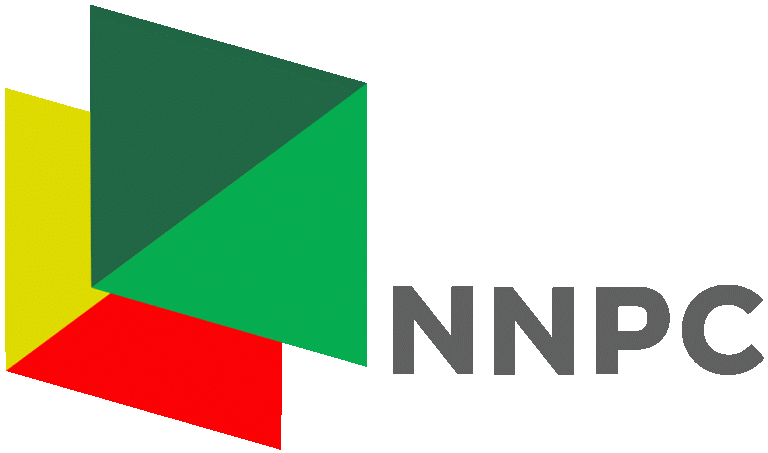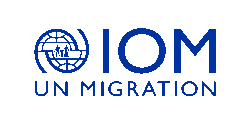Training On Formulating ICT Security Policy
INTRODUCTION
In today's interconnected digital world, organizations face an increasing number of threats to their information and communication technology (ICT) infrastructures. Cyberattacks, data breaches, insider threats, and regulatory compliance challenges have made it essential for organizations to adopt comprehensive ICT security measures. At the heart of an effective cybersecurity strategy is the development and implementation of robust ICT security policies.
The Formulating ICT Security Policy Training Course is designed to equip IT managers, security professionals, and decision-makers with the knowledge and skills necessary to develop, implement, and manage comprehensive ICT security policies tailored to the unique needs of their organizations. These policies form the backbone of an organization's security posture, guiding how sensitive information is protected, how threats are mitigated, and how compliance with laws and regulations is ensured.
Through a blend of theoretical knowledge and practical exercises, participants will learn the essential components of ICT security policies, from access control and data protection to incident response and business continuity. By aligning security policies with international standards and best practices, participants will gain the ability to create security frameworks that are both effective and adaptable to the ever-changing landscape of cyber threats.
This course is designed to help participants understand the process of creating, implementing, and managing an effective ICT (Information and Communication Technology) security policy for organizations. The course will cover key principles, frameworks, and best practices that govern the security of IT infrastructures. Below is an outline of the training course modules.
DURATION
10 Days
TARGET AUDIENCE:
- Individuals who are responsible for planning, managing and auditing ICT resources in an organization.
- IT professionals
- Information security specialists
- Managers and decision-makers responsible for cybersecurity
OBJECTIVES
At the end of the course, the participants will be able to:
- Understand the Importance of ICT Security Policies
- Develop Comprehensive ICT Security Policies
- Apply ICT Security Frameworks and Best Practices
- Conduct Risk Assessments for Policy Development
- Implement Access Control and Identity Management Policies
- Design Data Protection and Privacy Policies
- Establish Incident Response and Business Continuity Policies
- Create Acceptable Use and Endpoint Security Policies
- Develop Policy Monitoring, Enforcement, and Audit Strategies
- Foster a Culture of Security Awareness
- Manage the Policy Lifecycle
COURSE OUTLINE
Module 1: Introduction to ICT Security Policy
- Overview of ICT Security:
- Definition and importance of ICT security in organizational environments.
- Key concepts: confidentiality, integrity, availability (CIA Triad).
- Purpose of ICT Security Policies:
- The role of security policies in safeguarding organizational assets.
- How security policies align with business objectives and risk management.
- Types of ICT Security Policies:
- Corporate security policies, acceptable use policies, access control policies, and incident response policies.
Module 2: ICT Security Governance and Frameworks
- Governance and Leadership:
- The role of governance in driving security policy creation.
- Responsibilities of senior management and IT leadership in security policy formulation.
- Security Frameworks and Standards:
- Introduction to industry standards and frameworks such as ISO/IEC 27001, NIST Cybersecurity Framework, and COBIT.
- How frameworks guide the creation of security policies and ensure compliance.
- Legal and Regulatory Considerations:
- Overview of relevant regulations such as GDPR, HIPAA, PCI-DSS, and their influence on security policies.
- Understanding the legal ramifications of non-compliance with security policies.
Module 3: Risk Assessment and Policy Development
- Understanding Risk Management:
- Definition of risk management and its relationship with ICT security policies.
- The importance of risk assessments in identifying security vulnerabilities and threats.
- Conducting a Risk Assessment:
- Steps to perform a risk assessment: asset identification, threat analysis, vulnerability assessment, and risk evaluation.
- Tools and methodologies for risk assessment.
- Developing Security Policies Based on Risk:
- Translating risk assessment findings into actionable security policies.
- Prioritizing security policies based on the organization’s risk tolerance and critical assets.
Module 4: Components of an ICT Security Policy
- Core Elements of a Security Policy:
- Introduction to key components: purpose, scope, roles and responsibilities, and enforcement.
- Detailed discussion of the essential elements of ICT security policies, including:
- Access Control: Who can access the systems and data?
- Data Protection: How is sensitive data handled and protected?
- Acceptable Use: What are the permitted and prohibited behaviors?
- Incident Response: How will the organization handle security breaches?
- Physical and Environmental Security: Securing physical access to ICT assets.
- Policy Documentation:
- Structuring policies for clarity, compliance, and ease of use.
- Importance of policy consistency and formal approval processes.
Module 5: Access Control and Identity Management Policies
- Access Control Principles:
- Overview of access control mechanisms: role-based access control (RBAC), least privilege, and need-to-know principles.
- Developing Access Control Policies:
- Defining user roles, permissions, and responsibilities within an ICT environment.
- Multi-factor authentication (MFA) and password management policies.
- Identity and Access Management (IAM):
- Implementing policies for identity verification, authentication, and authorization.
- Policies to manage user lifecycle, including onboarding and offboarding.
Module 6: Data Protection and Privacy Policies
- Data Classification and Protection:
- Establishing policies for classifying data based on its sensitivity (public, internal, confidential).
- Defining data protection measures, including encryption, data masking, and backup policies.
- Privacy Regulations and Compliance:
- Creating policies to ensure compliance with data privacy laws such as GDPR and HIPAA.
- Policies related to user consent, data retention, and rights to access/delete personal data.
- Data Handling and Retention:
- Policies for secure data handling, storage, and disposal.
- Defining retention periods and procedures for securely archiving or deleting data.
Module 7: Acceptable Use and Endpoint Security Policies
- Developing Acceptable Use Policies (AUP):
- Defining permissible uses of organizational ICT assets, including the internet, email, and software.
- Establishing penalties for policy violations and monitoring of user activity.
- Endpoint Security:
- Policies for securing devices that connect to the organization’s network (laptops, smartphones, tablets).
- Mobile Device Management (MDM) policies and Bring Your Own Device (BYOD) guidelines.
- Patch Management and Software Use:
- Policies for keeping systems up to date with security patches and preventing the use of unauthorized software.
Module 8: Incident Response and Business Continuity Policies
- Incident Response Planning:
- Creating an incident response policy to define how the organization will detect, respond to, and recover from security incidents.
- Incident response team roles and responsibilities.
- Business Continuity and Disaster Recovery:
- Developing policies for business continuity and disaster recovery, including backup procedures, recovery point objectives (RPO), and recovery time objectives (RTO).
- Post-Incident Review:
- Policies for conducting post-incident reviews to identify lessons learned and improve future responses.
Module 9: Monitoring, Enforcement, and Audit Policies
- Security Monitoring Policies:
- Establishing policies for monitoring ICT systems, networks, and user activities.
- Utilizing Security Information and Event Management (SIEM) tools to detect and respond to suspicious activities.
- Policy Enforcement:
- Mechanisms for enforcing ICT security policies, including disciplinary measures for non-compliance.
- Educating staff and promoting a culture of compliance.
- Audit and Review:
- Regularly auditing security policies to ensure their effectiveness and alignment with evolving threats.
- Policies for internal and external security audits and the role of continuous improvement.
Module 10: Policy Implementation and Training
- Communicating Security Policies:
- Strategies for effectively communicating ICT security policies to employees and stakeholders.
- Importance of employee awareness programs and training on policy adherence.
- Employee Training and Awareness:
- Developing and delivering cybersecurity training programs to promote understanding of security policies.
- Addressing challenges such as resistance to policy changes and ensuring ongoing policy compliance.
- Policy Lifecycle Management:
- Procedures for reviewing, updating, and retiring outdated security policies.
- How to adapt security policies in response to emerging threats, new technologies, or regulatory changes.
CERTIFICATION
- Upon successful completion of this training, participants will be issued with Macskills Training and Development Institute Certificate
TRAINING VENUE
- Training will be held at Macskills Training Centre. We also tailor make the training upon request at different locations across the world.
AIRPORT PICK UP AND ACCOMMODATION
- Airport pick up and accommodation is arranged upon request
TERMS OF PAYMENT
- Payment should be made to Macskills Development Institute bank account before the start of the training and receipts sent to info@macskillsdevelopment.com
Training On Formulating Ict Security Policy in Kenya
| Dates | Fees | Location | Action |
|---|---|---|---|
| 13/10/2025 - 24/10/2025 | $2,950 | Mombasa |
|
| 20/10/2025 - 31/10/2025 | $2,450 | Nairobi |
|
| 03/11/2025 - 14/11/2025 | $3,950 | Johannesburg |
|
| 10/11/2025 - 21/11/2025 | $3,950 | Kigali |
|
| 17/11/2025 - 28/11/2025 | $2,950 | Mombasa |
|
| 01/12/2025 - 12/12/2025 | $4,950 | Johannesburg |
|
| 08/12/2025 - 19/12/2025 | $3,950 | Kigali |
|
| 05/01/2026 - 16/01/2026 | $4,950 | Johannesburg |
|
| 12/01/2026 - 23/01/2026 | $3,250 | Mombasa |
|
| 19/01/2026 - 30/01/2026 | $2,450 | Nairobi |
|
| 02/02/2026 - 13/02/2026 | $5,950 | Dubai |
|
| 09/02/2026 - 20/02/2026 | $3,950 | Kigali |
|
| 16/02/2026 - 27/02/2026 | $2,450 | Nairobi |
|
| 02/03/2026 - 13/03/2026 | $4,950 | Pretoria |
|
| 09/03/2026 - 20/03/2026 | $3,250 | Mombasa |
|
| 16/03/2026 - 27/03/2026 | $2,450 | Nairobi |
|
| 06/04/2026 - 17/04/2026 | $5,950 | Instanbul |
|
| 13/04/2026 - 24/04/2026 | $2,450 | Nairobi |
|
| 04/05/2026 - 15/05/2026 | $4,950 | Johannesburg |
|
| 11/05/2026 - 22/05/2026 | $3,950 | Kigali |
|
| 18/05/2026 - 29/05/2026 | $2,450 | Nairobi |
|
| 01/06/2026 - 12/06/2026 | $5,950 | Dubai |
|
| 08/06/2026 - 19/06/2026 | $3,250 | Mombasa |
|
| 15/06/2026 - 26/06/2026 | $2,450 | Nairobi |
|





















